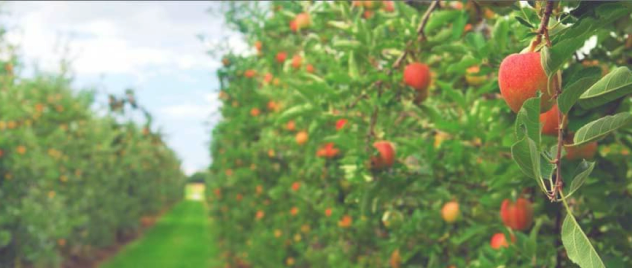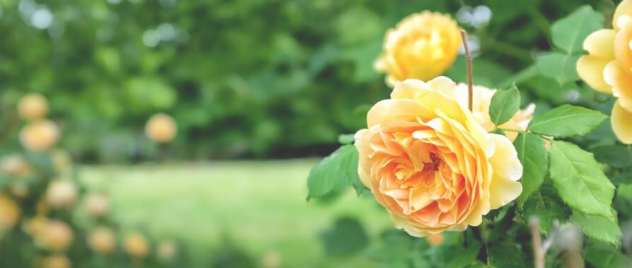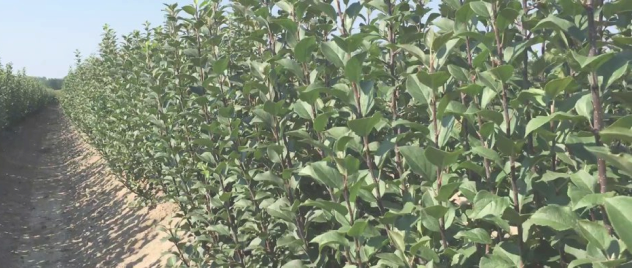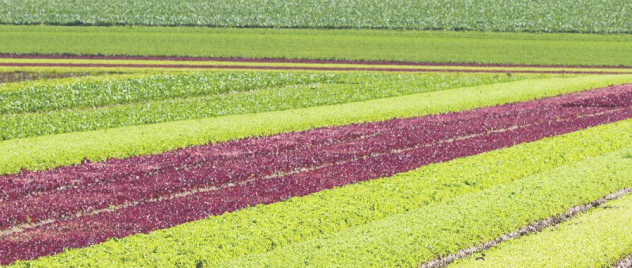PEARS
Pear (Pyrus communis L.) represents a genus of plants from the family Rosaceae, also related to apple and quince. Because of its delicious fruits, it is cultivated for more than 4000 years and more than 1000 varieties are known up to now. Fresh fruits contain up to 20% of dry matter, 9-15% of sugars, organic acids, cellulose, a significan amount of tannin and pectin, as well as numerous minerals, vitamins, and micro-elements. In addition to consumption as a fresh product, the pear is used in the processing industry for juice, jams, compotes, and others. In our nursery, we are producing high-quality pear fruit trees for professional orchards, but also for the hobby market.
PEAR
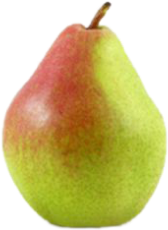
ROOTSTOCKS
PYRUS COMMUNIS
Used for large specimen pear trees. Compatible with all pear varieties, produces long-living, large trees. Very vigorous gives more homogeneous growth than a standard pear seedling. Bearing time is prolonged. Compatible with most soil types.
BA 29
This is a quince rootstock that is used in pear production when short wide fruit is desired. A semi-intensive, low vigor planting rootstock. Early bearing, very high-yielding. Tolerant of heavy and wet soil, as well as a root-lesion nematode. Fair anchorage system. Drought tolerant.
TRAINING SYSTEMS
PALMETTE
This training system is suitable for orchards of medium-density as well as for smaller farms. This system is formed from a central main leader and evenly spaced levels of side branches. On every level, there are two side-branches and arranged in 3 or 4 levels. Branches are formed at an angle of 45° to 60° relative to the main leader. After planting, in spring, the tree is cut to a length of 60 cm from the ground. From the top branches, 3 are chosen and form the first level of fruit-bearing branches. The top strongest is left to form the leader, removing the competition. In the second year, the leader is cut if it is longer than 80 cm. Competition sprouts are removed, and two best are left for the second level. When the lower branches gain 100-130 cm in length, they are bent and supported to form a 45°-50° angle. The process is continued in the third year.
SLENDER SPINDLE
Widely used in pear production, it represents the most common form for a modern, intense orchard used by professional and hobby growers. Crown is formed by leaving the central main leader which is a skeleton for other side branches that are fruit-bearing. 1-year-old trees are planted and in the spring they are cut to the height of 70-80 cm from the ground. When the top branches start to grow, the 2, 3 competition branches are removed, as well as all of the sprout branches on the tree 40 cm from the ground. If necessary, the main leader is supported by tying, and the best young branches are tied to the wire to a horizontal position 30 cm one from the other. In the spring of the second year, the main leader is not cut back, unless there are flowering buds on top (cut to the first developed bud). Last year branches are not cut back or are cut to form a cone-like shape of the tree. So the lower branches are the longest and get shorter to the top. The top will form new branches that are bent and formed in a horizontal position. In 3rd year the branches are controlled to reduce vigour and to form a cone shape of the crown.
SUPER SPINDLE
Superspindle represents a modification of the Slender Spindle system and is one of the most intense systems for growing pears professionally. Grafted on BA 29 rootstock. After planting the tree should be cut to 70-80 cm from the ground. The sprouts will grow out of the buds, and it is important to leave the top ones when they reach a length of 10 cm. Branches below, and suckers are cut off or in some cases, thinned out. In the second year, the main leader is left to develop unless it shows a vigorous growth in which case they are controlled. Suckers from the ground are removed by cutting. This year it is possible to have a small amount of fruit but it is selectively removed to allow the development of the trunk. Usual pruning and thinning in the third year.
See our full SELECTION of PEAR TREES we have in our offer
SANTA MARIA
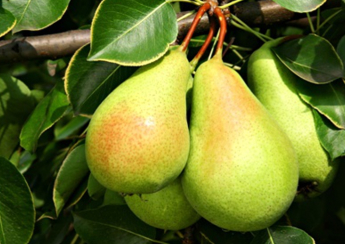
TREE:
The tree is strong and vigorous, with a semi-upright, fast-growing habit. It is flowering mid-early and yields are excellent. It prefers late and mild thinning and works best on rich soils.
POLLINATORS:
Williams, Abate Fetel, Butirra.
FRUIT APPEARANCE:
Shape is conical. The skin is lemon-yellow in color with red shades on the side that gets more sun. The flesh of Santa Maria is white in color, mildly juicy, soluble, with a less accentuated scent and a characteristic aroma. During the maturation in the cold storage, the skin color changes slowly to yellow. It can be stored for a long period of time.
FRUIT SIZE: Medium-large to large.
HARVEST:
Early. Middle to late July.
COMMERCIAL USE:
Stabile variety on the market as it is specific because of its fine taste and is not too juicy. High productivity and early harvests. Highly appreciated fresh, and also can be stored up to 3 months in common cold storage, and more in CA, but has to be picked just before the full ripeness if intended for cold storage.
BUTIRRA (EARLY MORETTINI)
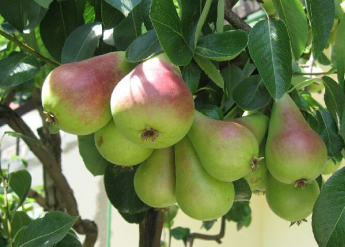
TREE:
Tree of Butirra variety is medium vigorous to vigorous and flowers mid-early season with a slight inclination to early blooming varieties. A very fertile pear variety that gives yields early in its life cycle and gives substantial yields every year. Diploid variety, and is a good pollinator.
POLLINATORS:
Santa Maria, Williams.
FRUIT APPEARANCE:
Skin is smooth, thin and glossy, yellow-green color in base covered in bright red blush on the sunny side. Above that skin is speckled with small and slightly distinct dots. The flesh of Butirra pear is firm, whitish and juicy, sweet-sour in taste, and a very pleasant aroma.
FRUIT SIZE: Medium-large to large.
HARVEST:
End of July - beginning of August.
COMMERCIAL USE:
Butirra is considered as a high-quality dessert pear, and its harvest time is very convenient for the market. Its taste, excellent yields, and appearance make it a great industry choice as well as for the hobby market.
WILLIAMS
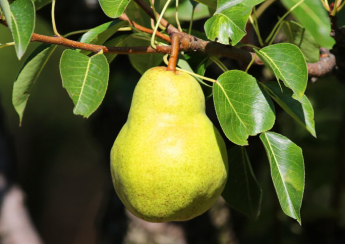
TREE:
Medium to a strong and vigorous tree, with a semi-erect growing habit. Flowering is mid-late to late, in April-May.
POLLINATORS:
Self-fertile, Abbe Fetel, Conference.
FRUIT APPEARANCE:
It has a characteristic pear shape. The skin color is pale green during the harvest, which changes to a lemon-yellow as the fruit matures. It also has visible, brown lenticels on the surface. The flesh of Williams pear is yellow to white, sweet, juicy, with an accentuated musky aroma.
FRUIT SIZE: Medium to large.
HARVEST:
Late August-beginning of September.
COMMERCIAL USE:
A very important commercial variety as its yields are regular and rich and is most widely used in the processing industry. The storage capability is great, until January in cold storage and until March in CA storage.
ABATE FETEL
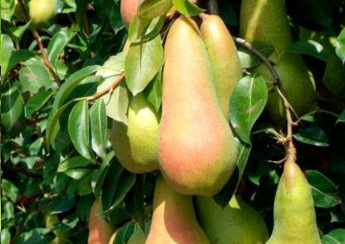
TREE:
Vigour of the tree is medium strong, and branches have a medium spreading growing habit. It is suitable for all types of tree forming and growing systems. Flowering is mid-late and is a good pollinator.
POLLINATORS: Conference.
FRUIT APPEARANCE:
Shape is conical, elongated. Skin is thin, smooth, glossy with a green-yellow base color, yellow-bronze overlay, with possible pink blushes on the sunny side. The flesh is white-yellow in color, soft, juicy. Taste is sweet, with possible sour notes.
FRUIT SIZE: Medium-large to large.
HARVEST:
Second half of September.
COMMERCIAL USE:
Autumn variety with an attractive look. Used mainly as a dessert pear. It has a very good storage potential, kept until January in cold storage, and March in CA storage.
CONFERENCE
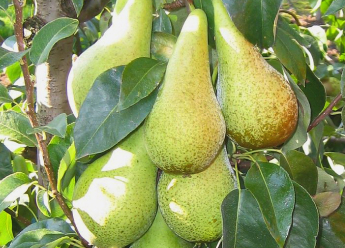
TREE:
The Conference pear tree is a medium to large-sized tree with an upright growth habit. Vigour of tree is moderate-low. Early bearer that yields heavily and regularly. It blooms in the spring, typically in April or May.
POLLINATORS:
Doyenné du Comice, Bosc, or Bartlett pears are recommended as pollinator varieties for the Conference pear.
FRUIT APPEARANCE:
The Conference pear features an elongated shape with a slightly tapered neck and a rounded bottom giving it a slender look. The thin and smooth skin has a pale green to yellowish hue, often with a warm blush of red or russet patches. The attractive coloration adds visual appeal to the fruit, giving it a classic pear appearance. The Conference pear has a creamy white flesh that is smooth, juicy, and buttery in texture. It offers a delicate, sweet flavor with subtle hints of tartness. The flesh is crisp when harvested early, gradually becoming softer and smoother as it ripens. It is known for its fine-grained and melting texture, providing a delightful eating experience.
FRUIT SIZE:
Conference pears are typically medium to large in size, depending on growing conditions.
HARVEST:
Conference pears are usually ready for harvest in the late summer to early autumn, typically from August to October, depending on the region and climate. It is important to harvest the pears when they are firm but mature, as they continue to ripe on the tree.
COMMERCIAL USE:
Conference pears are widely recognized for their exceptional storage qualities. They have the ability to be stored for 3-4 months under controlled environment storage preserving their flavor and texture. This makes them a popular choice for both fresh consumption and commercial purposes. Conference pears are delicious when eaten fresh, but they are also suitable for poaching, baking, or incorporating into various culinary creations.
KIEFER
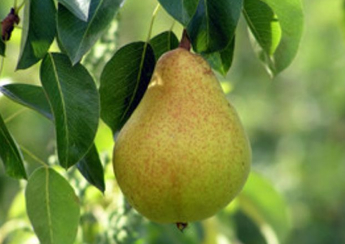
TREE:
The Kiefer pear tree is a medium to large-sized tree with a spreading growth habit. It forms a well-shaped canopy with moderate to high vigor. It is known as a reliable and productive bearer. It blooms in the spring, typically in April or May.
POLLINATORS:
Doyenné du Comice, Bartlett, or Bosc pears are recommended as pollinator varieties for the Kiefer pear.
FRUIT APPEARANCE:
The Kiefer pear has a unique shape, with a short and round bottom, a tapering neck, and a slightly knobby appearance. The thin and smooth skin has a yellowish-green hue, often with russet patches or a reddish blush. This combination of colors creates an attractive and distinct appearance. The fruit's flesh is creamy white and slightly grainy. It offers a crisp and juicy texture with a mildly sweet flavor and subtle hints of tartness. While it is not as meltingly tender as some other pear varieties, its unique texture and flavor make it well-suited for canning, baking, and making pear-based recipes.
FRUIT SIZE:
Kiefer pears are typically medium to large in size, depending on growing conditions. They have a rounded and plump shape, with a noticeable width and weight when mature.
HARVEST:
Kiefer pears are usually ready for harvest in the late summer to early autumn, typically from August to October, depending on the region and climate. It is important to harvest the pears when they are firm and fully mature, as they do not ripen well on the tree.
COMMERCIAL USE:
Kiefer pears are highly regarded for their excellent storage capabilities. They can be stored for an extended period, up to several months, in controlled environment storage. This makes them suitable for commercial purposes, such as canning, preserving, and cooking. While they can be enjoyed fresh, their firm texture and unique flavor profile make them particularly well-suited for culinary applications.

